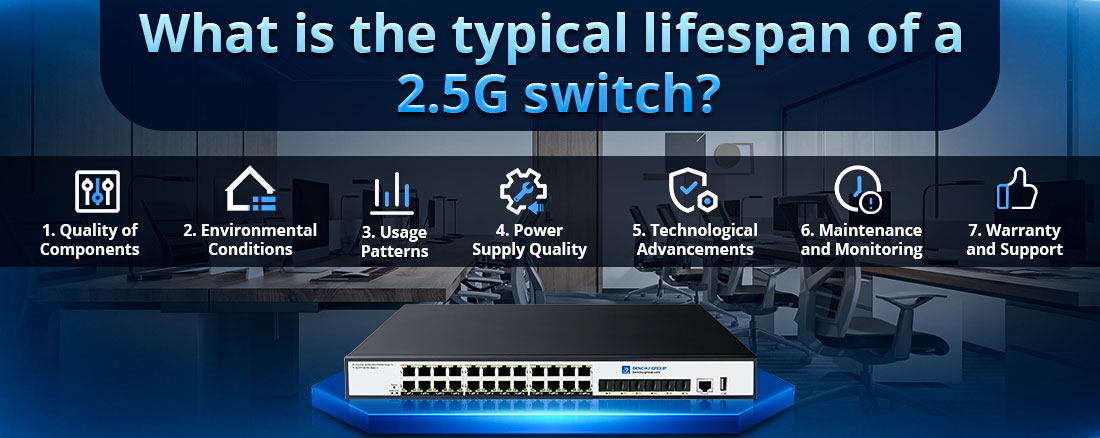
The typical lifespan of a 2.5G switch can range from 5 to 10 years, depending on several factors that influence its durability and performance. Here’s a detailed description of what affects the lifespan of these switches:
1. Quality of Components
Build Quality: High-quality switches often use superior materials and components, leading to longer lifespans. Look for switches from reputable manufacturers known for their reliability.
Cooling Systems: Effective cooling mechanisms, such as fans or heat sinks, help dissipate heat and prevent overheating, which can extend the lifespan of the device.
2. Environmental Conditions
Temperature and Humidity: Operating in environments with extreme temperatures or high humidity can negatively impact electronic components. Switches should be housed in climate-controlled spaces to maximize their lifespan.
Dust and Contaminants: Dust accumulation can lead to overheating and electrical failures. Regular cleaning and maintenance can help mitigate these effects.
3. Usage Patterns
Network Load: Switches under continuous heavy loads may experience wear more quickly than those used in lighter applications. Consistent monitoring and management can help balance the load and extend the lifespan.
Firmware Updates: Keeping the switch firmware updated can enhance performance and security, ultimately contributing to a longer functional lifespan.
4. Power Supply Quality
Power Surges and Interruptions: Reliable power supplies and protection against surges can prevent damage to switches. Using uninterruptible power supplies (UPS) can help safeguard against sudden power failures.
PoE Stability: For switches providing Power over Ethernet (PoE), stable and consistent power delivery is crucial to avoid damage to both the switch and connected devices.
5. Technological Advancements
Obsolescence: While the hardware may still function after 10 years, advancements in technology can make older switches less efficient or incompatible with newer devices. Businesses may choose to upgrade for better performance or features, even if the switch is still operational.
Standard Compliance: As networking standards evolve, older switches may not support newer protocols or speeds, prompting upgrades before the hardware fails.
6. Maintenance and Monitoring
Regular Checks: Periodic inspections and maintenance can help identify potential issues early, allowing for corrective actions that can extend the life of the switch.
Monitoring Tools: Utilizing network monitoring tools can alert administrators to performance issues or hardware failures, allowing for timely intervention.
7. Warranty and Support
Manufacturer Warranty: Many switches come with warranties ranging from 1 to 5 years, indicating the manufacturer’s confidence in their product's longevity. A good warranty often correlates with higher quality and longevity.
Technical Support: Ongoing manufacturer support can help address issues that arise during the switch's lifespan, ensuring optimal performance.
Conclusion:
The lifespan of a 2.5G switch typically falls between 5 to 10 years, influenced by factors such as component quality, environmental conditions, usage patterns, and maintenance practices. While the hardware may continue to function beyond this period, technological advancements and changes in networking standards may necessitate an upgrade for optimal performance and compatibility. Regular maintenance and careful management can significantly extend the effective lifespan of the switch.